 A few weeks ago I developed low back pain. Being a chiropractor does not exempt me from incurring the pain and aggravation of back pain. Regular exercise does not even exempt me from developing pain from time to time. Fortunately, back pain does not strike me too often. Perhaps my various healthy habits reduce the likelihood or frequency of these episodes. Nevertheless, it happened. This back pain ‘flare’ lasted two to three weeks of varying degrees of pain and limitation; symptoms varied from significant muscle spasms that would limit my mobility to lower-grade aching. The pain was concentrated in my right low back.
A few weeks ago I developed low back pain. Being a chiropractor does not exempt me from incurring the pain and aggravation of back pain. Regular exercise does not even exempt me from developing pain from time to time. Fortunately, back pain does not strike me too often. Perhaps my various healthy habits reduce the likelihood or frequency of these episodes. Nevertheless, it happened. This back pain ‘flare’ lasted two to three weeks of varying degrees of pain and limitation; symptoms varied from significant muscle spasms that would limit my mobility to lower-grade aching. The pain was concentrated in my right low back.
If you were a patient of mine during this back-pain period, you may or may not have noticed my altered practice posture. But, I was not shy or embarrassed to share with you that I was dealing with a bout of back pain. Why should I? Back pain, and, in fact, pain in general, is a part of life. We all go through it, and we should not be embarrassed. It is not a sign of physical or mental weakness. In fact, while I would rather not have pain, dealing with back pain provides me with a first-hand experience of what my patients are feeling when they visit me for help. I call this the ‘silver lining’.
Silver Lining
 Patients visiting me with pain will always get a compassionate chiropractor. But that compassion is usually rooted in empathy. But, during this back pain stint, my compassion was much more sympathetic. It’s a good reminder to me that pain hurts, alters our mood, and can really cloud our judgment. In turn, I’m not surprised that when we have back pain, we can panic, assume the worst, and forget the basics of managing pain. Fortunately, I heeded my own advice and did NOT panic. I did not assume the worst and chalked this bout of back pain up to the usual instigators: muscle tension, joint stiffness, and stress.
Patients visiting me with pain will always get a compassionate chiropractor. But that compassion is usually rooted in empathy. But, during this back pain stint, my compassion was much more sympathetic. It’s a good reminder to me that pain hurts, alters our mood, and can really cloud our judgment. In turn, I’m not surprised that when we have back pain, we can panic, assume the worst, and forget the basics of managing pain. Fortunately, I heeded my own advice and did NOT panic. I did not assume the worst and chalked this bout of back pain up to the usual instigators: muscle tension, joint stiffness, and stress.
So, how does the chiropractor manage his own bout of back pain? The same way you should. And this brings me to the lessons learned from a back pain flare:
Lessons
- Back pain is usually due to non-serious muscle tension and joint stiffness. So, recovery from back pain usually requires some muscle and joint rehabilitation.
- At first, all I could do was gentle stretching. I spent a lot of time on the floor in Child’s Pose, Downward Dog, and Up-Dog. As the pain diminished, I was then able to get into different positions, such as a side body stretch and a spinal twist stretch.
- With diminished pain and slightly improved mobility, I then re-engaged in my mobility exercises: Neck and Hip CARs, Global, and then Segmental Cat Cows.
- The further improvement led me to re-engage in core strength exercises. Nothing fancy. Back to the basics: Bird Dog, Dead Bug, Planks, and the aforementioned segmental Cat Cow.
- With my pain now gone, I am inspired to maintain the core strength, mobility, and stretching routines that helped me recover.
Often you’ll hear about “corrective exercises” as part of rehabilitation. But, honestly, if an exercise is good enough to help you recover, it’s probably worth keeping in your regular routine. It doesn’t make sense to stretch a tight muscle when you’re sore, only to stop stretching it once feeling better. Our musculoskeletal system is always changing: tighter, looser, stronger, weaker, stiffer, etc. Try to maintain all aspects of your exercise in your routine forever: Stretching, Mobility Exercises, Cardio, Strength, and create a diversity of these exercises:
- Strength Training: Push, Pull, Lift.
- Stretching: Transverse, Sagittal, and Rotational planes
- Mobility: Don’t rely on stretching alone to ensure you have healthy joints. Mobility Training and Stretching are not the same things.
- Cardio: Various levels of intensity
- It is very difficult to diagnose yourself (even if you’re a back pain diagnostician, like me). So, I booked some visits with musculoskeletal experts. In this case, I enlisted the help of a chiropractor and a massage therapist.
- Thankfully, Susan Shipton, RMT, moved her practice into my shared office space with myself and James Braithwaite (physiotherapist). So, that was convenient.
- I prioritized the other healthy habits that can add up to pain relief.
- I prioritized my good sleep routine, attempting to get sufficient quality and quantity of sleep.
- I tried to eat as clean and healthy as possible
- I drank more water
- Back pain can often be exacerbated by stress. A source of stress entered my life around the time I got back pain. I talked it through with my wife (who happens to be a psychologist), put things in perspective, and added deep breathing and meditation to my recovery plan.
Bottom Line
 I got better. As I type this blog, I have zero pain. I also know that I’ll have pain again one day. I’m thankful for the professionals I can rely upon to help me recover. And, I’m relieved to report that my stretching, mobility, and strength exercises, in combination with stress management led me to a full recovery.
I got better. As I type this blog, I have zero pain. I also know that I’ll have pain again one day. I’m thankful for the professionals I can rely upon to help me recover. And, I’m relieved to report that my stretching, mobility, and strength exercises, in combination with stress management led me to a full recovery.
Back pain sucks. And it hurts. And it disrupts life. And, it always comes at a bad time. Such is life. Next time you’re hurt, follow my lead and pay me a visit. I can help. I know what you’re going through.
Everyone’s physicality is different, and, in turn, everyone’s back pain is unique. So, what worked for me might not work for you. But, it’s a great place to start. In this accompanying video, I demonstrate the exercises I incorporated into my rehabilitation plan. And, of course, what’s good for recovery is great for maintenance and improvement. Many of the exercises I incorporated to recover are part of my daily exercise routine.
